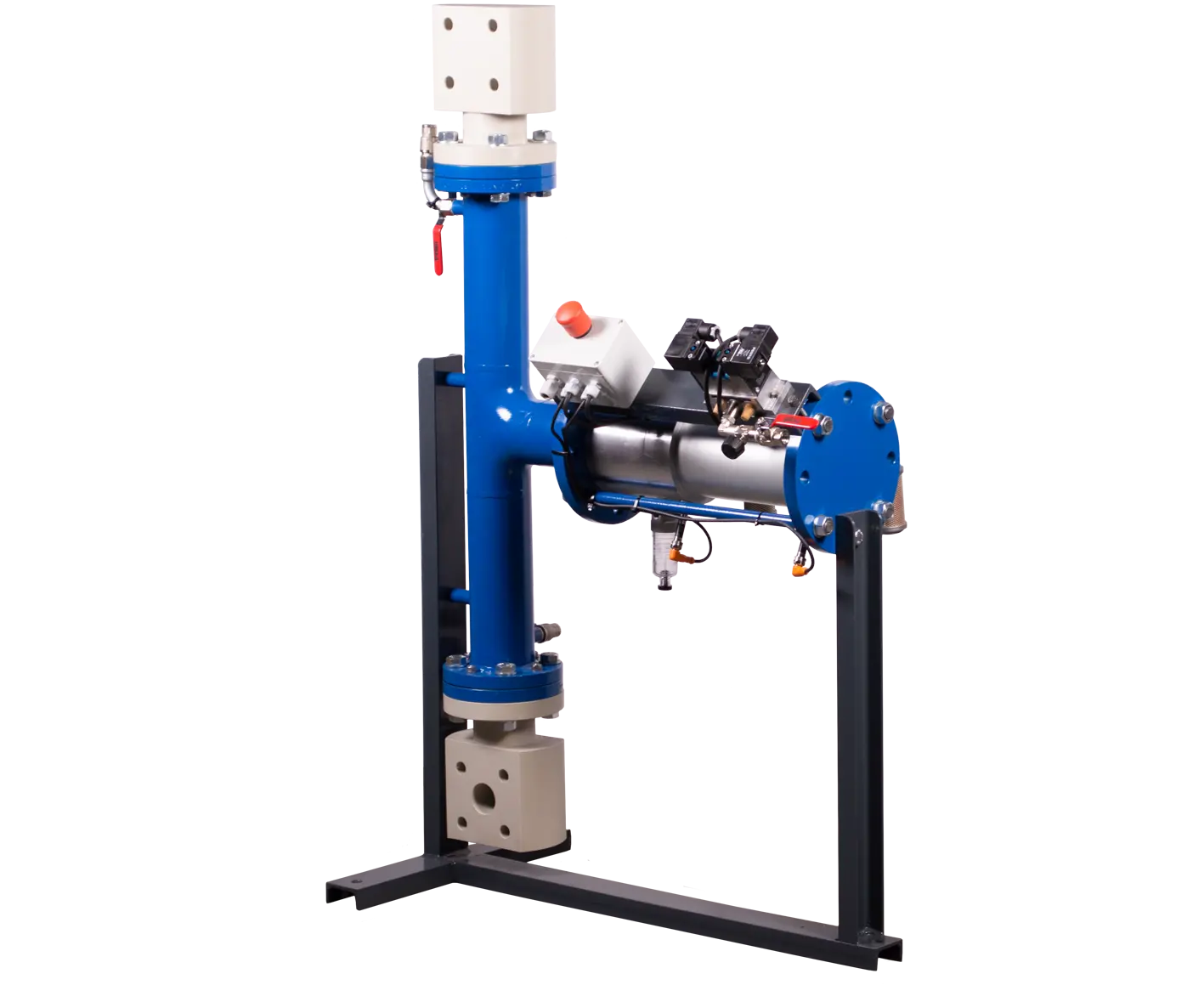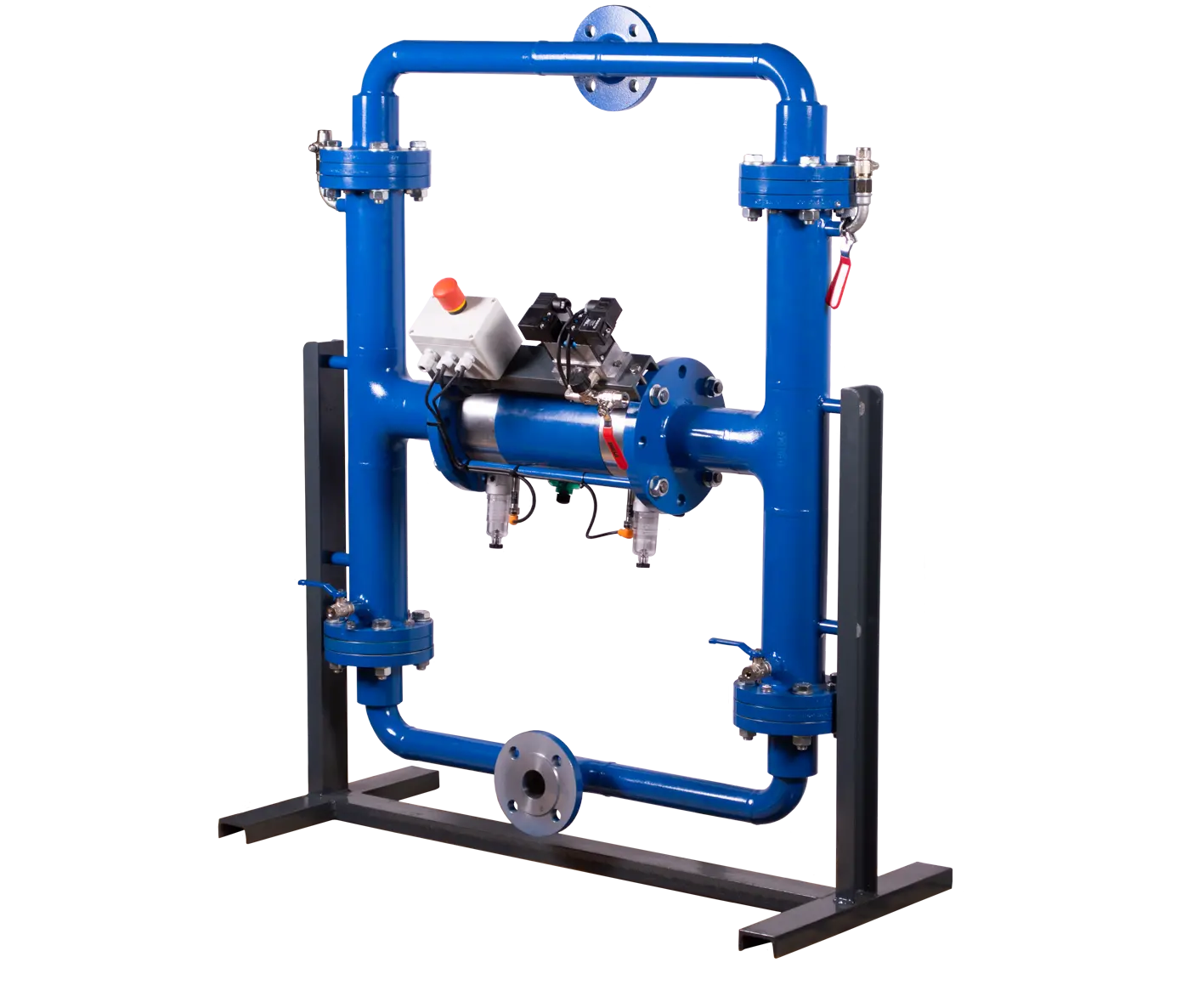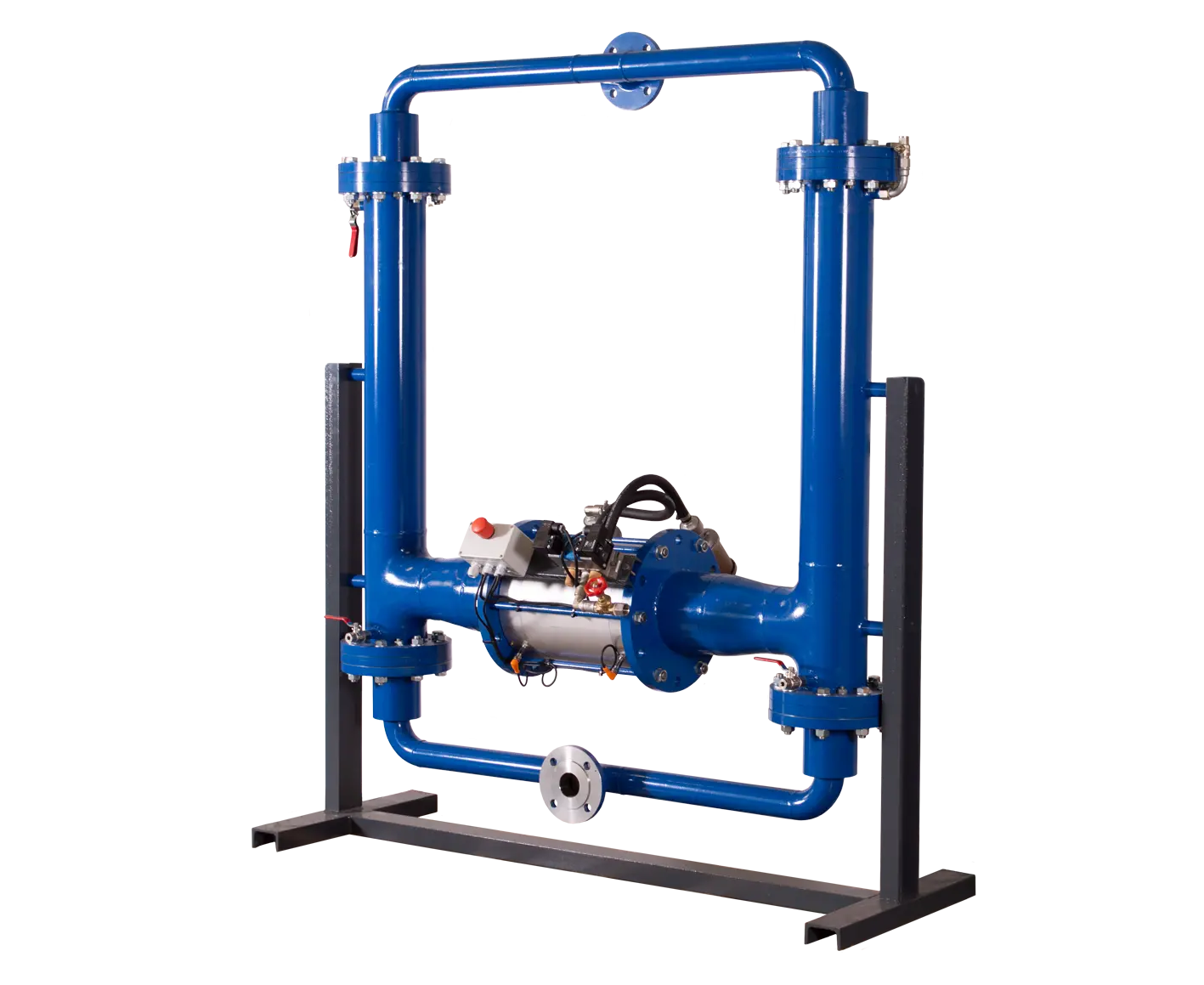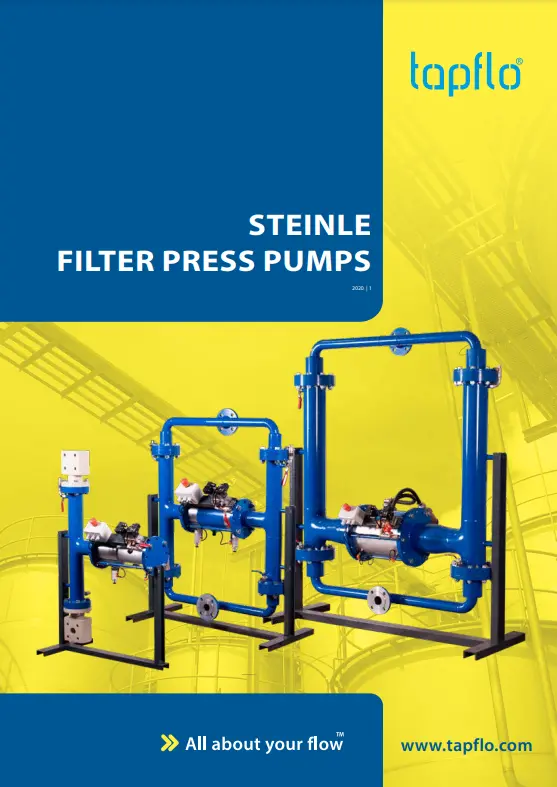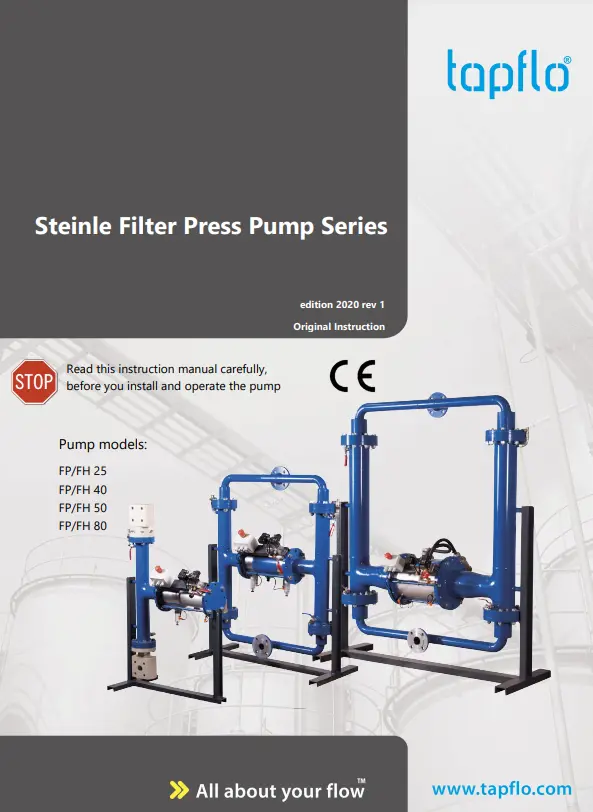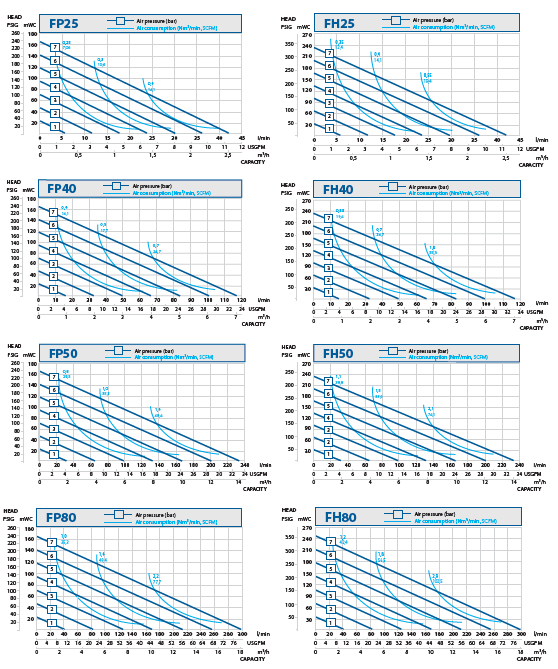Technical data
| Pump size | Max capacity (m3/h) |
| FP/FH 25 | 2.5 |
| FP/FH 40 | 7 |
| FP/FH 50 | 14 |
| FP/FH 80 | 18 |
The STEINLE pump is a single or double acting piston diaphragm pump with a hose as the diaphragm. The liquid transferred to the filter press requires exceptionally high performance pumps. They have to supply large quantities of liquid into the empty press as well as small quantities at high pressure when the filter press is filled. This pressure must be maintained for a long period of time.
The pumps are available in FP & FH series with different pressure transmission:
- FP - 1 : 2.4
- FH - 1 : 3.3
FEATURES & BENEFITS
- Self-regulating for filter press applications
- High pressure transmission up to 1 : 3.3
- Low air consumption
- Lifetime
- Dry running capability
- External electronic air valve
- Long life time of diaphragms
- Solid construction for heavy duties
Typical applications
- Automotive Industry
- Chemical and Paper Industry
- Filter Press Applications
- Porcelain, Glass and Ceramics






